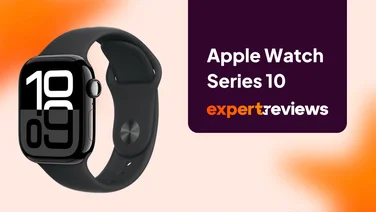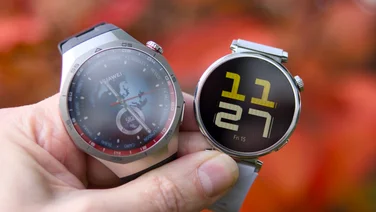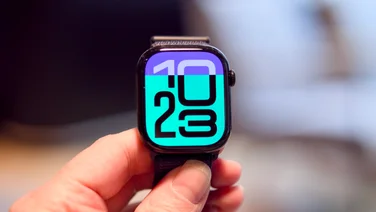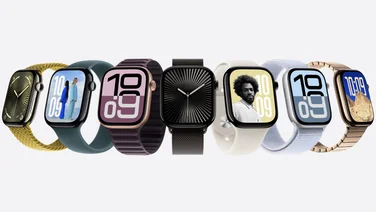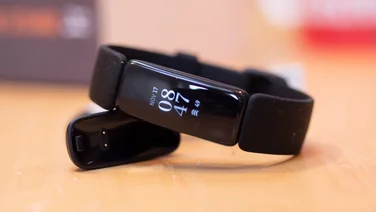To help us provide you with free impartial advice, we may earn a commission if you buy through links on our site. Learn more











- Bright, clear screen
- Long battery life
- Sleek design
- Not many apps
- Patchy synchronisation
- Poor notification handling
Product recall: Fitbit’s Ionic fitness watches have been recalled amid reports of batteries overheating and causing burns to users. The fitness tracker giants, acquired by Google last year, have voluntarily recalled 1.7m of the devices in circulation after the US Consumer Product Safety Commission (CPSC) announced a ‘burn hazard’. It has been reported that the lithium-ion batteries used in the Ionic trackers are overheating, with at least 115 reported incidents of overheating and 78 burn reports in the US. Two of the victims reported third-degree burns, and four reported second-degree burns. Internationally there are 118 burn injury reports so far, according to the CPSC.
On the Commission’s instruction, owners should stop using the recalled Ionics immediately and reach out to Fitbit to organise a return and refund. The device has meanwhile been taken down from Fitbit’s website and is no longer sold via authorised retailers. Nonetheless, the Ionic – which many owners use to track their sleep overnight – may still be available from third-party sellers, which prospective buyers should avoid.
Original review continues below:
Fitbit has led the way in the fitness band market for some time now, but in the smartwatch arena, it has struggled. Its first watch was the Surge, which worked well for fitness duties but struggled to compete with smartwatches for style or smart features. Its next effort, the Fitbit Blaze, wasn’t that much better, upping the ante on the style front, but omitting key features such as waterproofing and GPS. Finally, though, it seems as if there’s a Fitbit watch that fixes these problems: the Fitbit Ionic. It looks great, has GPS and waterproofing and combines that all with smartwatch-style features.
READ NEXT: Best fitness trackers
Fitbit Ionic review: What you need to know
The Ionic is the smartwatch Fitbit always wanted to make and, given its recent acquisitions of watchmakers Pebble and Vector, one it has also spent big to get right. In many ways, it has achieved this feat with the Ionic, but it’s still far from perfect.
So, what are its key features? Well, this is essentially a combination of the Surge and the Blaze all in one sleek package. It looks wonderful – much nicer in the metal than in most of the photographs I’ve seen – and it’s packed with all the features you need in a top-end fitness-cum-smartwatch. There’s a heart-rate monitor, GPS, proper water-proofing to 50m, music playback support, it has a bright, colourful OLED display and even built-in NFC for making contactless payments.
READ NEXT: Apple Watch Series 3 review – the ultimate smartwatch
Fitbit Ionic review: Price and competition
The Ionic is Fitbit’s most fully featured watch to date, but it’s also the company’s most expensive at £300 and at that price it edges into Apple Watch Series 3 (£329 for the non-4G version) and Samsung Gear S3 Frontier (£349) territory. It’s also more expensive than the recently discounted Android Wear-based Huawei Watch 2, which you can now pick up for a very reasonable £210, the TomTom Adventurer at £220 and the very nice-looking Garmin Vivoactive 3 at £280.
Fitbit Ionic review: Design, display and battery life
Of all its close competitors, though, it’s the Ionic that stands out for me, both in terms of the way it looks and its comfort on the wrist.
Some might not like its square-edged profile, preferring the softer edges of the Apple Watch or the more traditionalist round faces of the Samsung Gear S3 and Huawei Watch 2. I was of the same opinion – until I pried the Ionic from its box.











It’s available in three different colours – silver, burnt orange and dark metallic grey – it’s topped with a slightly convex Gorilla Glass 3 touchscreen and it looks gorgeous whichever one you go for. By default, the watch is supplied with a textured rubber wristband (both small and large are included in the box), but you can swap this out for the optional, £50 leather wristband or the two-tone £25 rubber sport band if you want a different look.
Alas, although the straps clip in and out neatly and easily, it isn’t a standard fitting, so until Fitbit decide to release more strap options, that’s all the choice you have.
Many of the Ionic’s features are accessed via the touchscreen, but there are also three textured buttons on the sides of the watch: one on the left that activates and deactivates the screen and serves as a back button; and two context-sensitive function buttons on the right edge.











The design is subtly stylish and understated, but the OLED display is the star here. It’s amazingly bright, reaching a peak of 1,000nit according to Fitbit and it’s super crisp. For me, it’s the best display I’ve seen on any smartwatch or fitness wearable. Most importantly it’s incredibly readable, whether you’re pounding the pavement on your evening jog or cramming in the lengths at the local pool. Some might take issue with the black border surrounding it, but this does mean there’s room for a light sensor, which adjusts the brightness of the display automatically, depending on the ambient conditions.
On the rear is the watch’s heart rate monitor, plus yet another proprietary Fitbit charging adapter (make sure you don’t lose your cable – replacements are £17), and inside the watch case are further sensors. In addition to the usual three-axis accelerometer and gyroscopes, the Ionic has an altimeter so the watch can track the number of staircases you’ve scaled during the day and GLONASS/GPS satellite positioning radios, which should, in theory, improve positional accuracy over regular single GPS devices.
The Fitbit Ionic caps it all with a battery life to put even the best smartwatches in the shade. I’ve been wearing the Ionic for a couple of weeks now and I’ve only had to charge it three times – that’s four to five days per charge. Obviously, if you use the GPS and exercise tracking features more intensively than I have, you’ll need to charge it more frequently. Fitbit states that the watch will last up to ten hours with continuous GPS use, but that’s still impressive, especially when you realise the Ionic is continually monitoring your movement and heart rate.











Fitbit Ionic review: Fitness tracking
Fitbit’s fitness tracking credentials are second to none and the Ionic takes that to the next level. It’ll track all the usual stuff a Fitbit Charge 2 can, of course, displaying all that in a friendly and accessible manner in the Fitbit app on your smartphone.
It’ll keep tabs on your heart rate during the day and overnight, track your sleep, your steps, floors climbed and if you take it out on a run or a bike ride without your phone it’ll track your speed and distance travelled accurately and plot that on a map within the Fitbit app when you get home.
The GPS tracking is accurate, the heart rate close enough and the rest of the metrics are presented in such a manner that they’re easy to understand and act upon. Better still, the watch’s auto-pause mode lets you track only those moments when you’re actually moving.
And in terms of exercise types it tracks, that’s pretty comprehensive, too. Full waterproofing means swim-tracking is available here for the first time in one of Fitbit’s smartwatch-style fitness trackers, with the watch keeping tabs on elapsed time, lengths swum and distance.











Plus, you can also ask the Ionic to track cycling, running, treadmill and weights sessions. There’s an interval training mode and a generic “Workout” mode, which tracks your heart rate continually but doesn’t activate the GPS, while the Fitbit Coach app takes you through various workouts, step-by-step, with instructions displayed on-screen.
All good stuff, but what’s great about the Fitbit Ionic isn’t necessarily what it tracks or the data it supplies afterwards – it’s how good it is at picking up on activity automatically. If you forget to select the running mode, for instance, it will detect what you’re doing and activate it automatically, GPS and all.
It’ll do the same if you walk somewhere at a brisk pace, even though there’s no specific walking exercise mode, and when I forgot to hit the Start button on my swim last Saturday morning it worked out what I wanted to do and activated automatically. I had to add a lap because that’s how long it took before recognising what I was doing, but it’s still a very useful feature to have. If only it was able to detect stroke types like the Apple Watch now can.
Unfortunately, this is where we get to the slightly more negative things. The big irritation for me is that, once you’ve looked at the summary of your most recent exercise session, then dismissed it, you can’t then look back at that summary again. You can tap to see your Today summary, which shows your activities – steps, heart rate, floors climbed and so on – but for in-depth analysis, you’re forced to check the app.











Fitbit Ionic review: Smartphone features
Even then, though, you might just be stymied, because the Ionic’s Bluetooth synchronisation is patchy, to say the least. The first issue is that it seems to take an absolute age to transfer data from watch to phone and it takes issue if you so much as look at it in a funny way.
Worse than this, though, is the Ionic’s handling of notifications. Not only can you not do very much with them when they arrive – they can be expanded slightly but emails and longer messages can’t be read in full – but they tend to arrive sporadically and in batches. You might as well just check your phone, in other words.
I’m also far from convinced by the Ionic’s performance. List scrolling and screen-to-screen animations are far from smooth. And, although Fitbit has opened up the Ionic’s API to third-party developers, there’s nothing to speak of to run yet, aside from what’s preinstalled on the watch out of the box.











In fact, the only smartwatch-type feature that really convinces on the Ionic is Fitbit Pay. For testing, Fitbit issued a prepay Boon Mastercard, which I loaded into the Fitbit app and activated in the app. It worked perfectly on the occasions I used it on Oyster card readers on the London Underground and at contactless payment terminals in various places. All you do is press and hold the button on the left-hand side of the watch, hold the watch near the reader and it buzzes when the payment has been made.
The key to the system’s success, however, will be ongoing bank and credit card support. So far it’s looking good. There’s already support from AMEX, Mastercard and Visa, and Fitbit Pay users will soon be able to add their HSBC, Santander and Capital One cards to the app with more set to be added over the coming months.
Fitbit Ionic review: Verdict
The Fitbit Ionic is far from the perfect smartwatch/fitness-wearable hybrid. It has issues with Bluetooth connectivity and notification delivery and its UI has both usability and performance issues.
Even then, if Fitbit had priced this around the £200 mark, I’d be perfectly happy to recommend it, purely because it’s a great-looking fitness tracking smartwatch with battery life to die for.
As it is, the £300 price puts it firmly into Apple Watch Series 3 and Samsung Gear S3 territory – and it’s nowhere near the all-rounder that those watches are. That’s a shame, because there’s great potential here.


